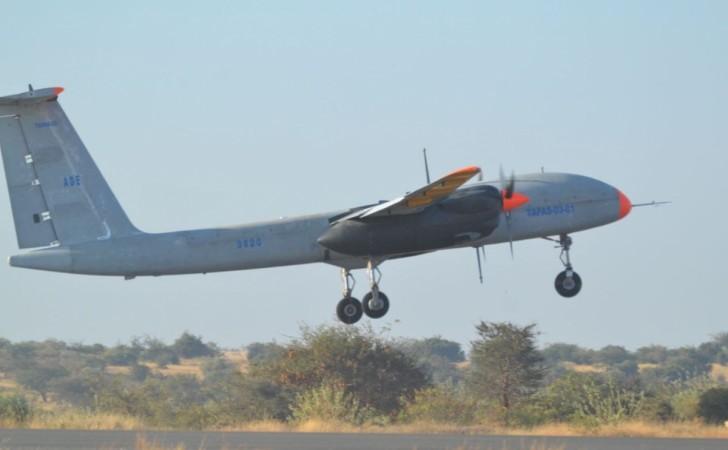
The state-run Defence Research and Development Organization (DRDO) successfully tested the indigenously developed Unmanned Ariel Vehicle (UAV) Rustom 2 (aka TAPAS-BH-201) at its Aeronautical Test Range (ATR) facility in Chalakere, a village in the Chitradurga district of Karnataka that is 200km from Bengaluru, on February 25.
Rustom 2's testing was witnessed by top government officials, including Dept. of Defence (R&D) Secretary and DRDO Chairman Dr S Christopher, Director General of Aeronautical System Dr CP Ramanarayanan and DG Electronics & Communication Systems J Manjula, along with senior scientists. They congratulated the Rustom team for the success.
The test flight assumes high significance because this is the first time Rustom 2 flew with a higher-power engine.
It is part of a Rs 1,500-crore drone project initiated to meet the requirements of India's armed forces — Army, Navy and Air Force. If things go as planned, the import of expensive precision-attack or predator drones from the US (Guardian) and Israel (Searcher and Heron) in the near future will be cut down.
The Rustom 2 drone made its maiden successful flight on November 16, 2016.
@DRDO_India successfully flew its Rustom 2 today at its Aeronautical Test Range (ATR) at Chalakere at Chitradurga. @DefenceMinIndia @PIB_India @MIB_India @nsitharaman pic.twitter.com/XraISjLtXA
— DPR (@SpokespersonMoD) February 25, 2018
Here are 8 facts you should know about Made-in-India indigenous predator drone Rustom 2:
- Rustom 2 (meaning Warrior) aka TAPAS-BH-201 (Tactical Airborne Platform for Aerial Surveillance-Beyond Horizon-201) has been developed by the Aeronautical Development Establishment of the DRDO, and aerospace major Hindustan Aeronautics Ltd and Bharat Electronics Ltd are its production partners.
- Rustom 2 is a Medium Altitude Long Endurance (MALE) multirole class drone and is capable of flying with top speed of 225km/hour up to 25-30 straight hours with a full fuel tank
- Rustom 2 can work both as a manned and an autonomous vehicle with surveillance capability as well as in armed combat.
- Rustom 2 is powered by twin NPO-Saturn 36MT turboprop engines that have a thrust of 450 kilogram force (kgf).
- Its autonomous capabilities include real-time, high-resolution image and video gathering for intelligence, surveillance, and reconnaissance (ISR) missions with Synthetic Aperture Radar (SAR) and Electro-Optical (EO) sensors. When a target is identified, it will either illuminate the target with a laser designator for other strike aircraft or descend to a lower altitude and attack the target with its own air-to-surface missiles.
- In addition to SAR and EO sensors, it can carry up to 350 kg payloads, like electromagnetic intelligence (ELINT), communication intelligence (COMINT), Maritime Patrol Radar (MPR), radio altimeter, transmitting and receiving antennae, and other situational awareness payloads
- It measures 9.5m in length, has a 20.6m wingspan, and has an empty weight of 1,800kg. The tail section comes with a T-type vertical stabilizer that creates a high-mounted horizontal tail design. Also, Rustom 2 has a single nose wheel in the front and two single-wheeled main gears at the center. With tricycle landing gear, it can make safe take-off and landing maneuvers on hard surfaces (as per Air Force Technology)
- Rustom 2 has the ability to operate at line-of-sight ranges of 250km and remain airborne for up to 30 hours at 35,000 feet above mean sea level.
Trivia:
For those unaware, Indian Army had used a drone to identify terrorist camps and also monitor the surgical strikes that took place in Pakistan-occupied Kashmir in retaliation for the Uri attack in late 2016.
Homemade Rustom 2 may replace such imported drones used across the Indian border in the near future.














